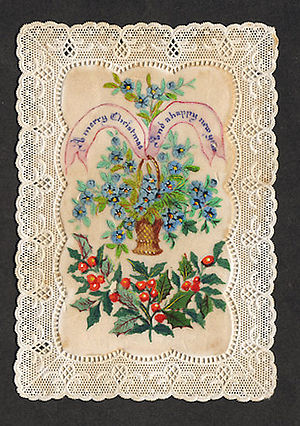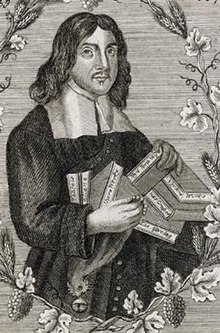Carols, Cards, Trees,
and Stories….
Many Christmas traditions we celebrate today were made popular by Queen
Victoria and her beloved Prince Albert. The Victorians, with their love of
nostalgia and history, rushed to copy everything done by their dear Queen.
Decorating Christmas trees, sending Christmas Cards, singing Carols, and
exchanging gifts found favour with the English masses, who eagerly imitated the
Royal Family. From Christmas Eve to Boxing Day, and from church to
table.
Hope you enjoy reading more about them,
Suzi Love
Christmas
Carols
The
word ‘carol’ comes from the old French ‘carole’ for a song written and played
as a courtly dancing song. Carols then
took on a more popular form, telling stories and celebrating religious themes
for all seasons until the late 19th century when they became
associated with Christmas.
In
1822, Davies Gilbert published “Some Ancient Christmas Carols”, in which he
described a typical English West Country Christmas. The collection sang of food, drink, and good
things celebrated at Christmas.
The British Museum said: “
Mr. Gilbert has taken advantage of old Time, and made safe, for some
centuries at least, a record of our ancient Christmas Carols; and for this good
deed has secured the gratitude of Antiquaries yet unborn. These Carols are
genuine national curiosities.”
They took the place of Psalms in all churches on Christmas Day and, as the whole congregation could join in, were greeted with huge approval. Carols were passed on orally from place to place, often with different words or tunes.
The published carols included songs still popular
today, including The First Noël, I Saw Three Ships, and God Rest Ye Merry
Gentlemen. This collection was followed by compilations of carols from other
scholars such as William Sandy’s works in 1833 and 1852.
Christmas Cards
 |
Victorian, circa 1870 (Photo credit: Wikipedia)
|
At the end of the winter term, schoolmasters would set their pupils to
work on Christmas Pieces, samplers of writing on superior paper with engraved
borders, to show parents how they had progressed during the year. By about
1820, the engraved borders were enhanced with color and the children’s pieces
became more decorative.
In 1843, Sir Henry Cole commissioned
an artist from the Royal Academy to design a card he could send to his large circle
of family and friends instead of writing them letters. Postage had been
standardized three years earlier and Cole
had played a key role in initiating Uniform Penny Post.
Wanting to popularize
the use of post, Cole hit upon a brilliant idea of spreading holiday cheer by
sending cards. The card was issued from a periodical, Felix Summerly’s Home Treasury, and sold for a shilling a piece.
Lithographed and hand-colored, it showed a family of three generations quaffing
wine and caused a furor among the temperate classes. On either side were
allegorical vignettes depicting the feeding of the hungry and the clothing of
the naked and the whole thing was enclosed in a rustic frame of carved wood and
ivy.
Sales grew and designs and sizes changed. The
first cards were meant to appeal to the masses and encourage them to send large
numbers by post. So rather than focus on religious images, they showed sentimental
or humorous images of family and children, fanciful designs of flowers,
fairies, or reminders of the approach of spring.
Cards were shaped as a bell, a fan, a crescent, a circle, or a diamond and were folding, decorated with jewels, iridescent, embossed, and carried either simple Christmas and New Year greetings or had verses and carols written in them. The next year, Mr W.C.T. Dobson produced a sketch symbolizing the ‘Spirit of Christmas’ which sold many more than the previous thousand and the novelty caught on. More
Victorian Christmas Cards More on
Victorian publishers of Christmas cards
Christmas Trees
After
Queen Victoria’s marriage to Prince Albert, the English adopted his German
customs for trees and presents.
In 1841, a large tree was decorated in Windsor
Castle and the Queen and her family exchanged gifts on Christmas Eve. Presents were laid out on tables, each
of which had a Christmas tree at its centre.
On 24 December
1850 the Queen wrote in her journal,
‘My beloved Albert first took me to my
tree and table, covered by such numberless gifts, really too much, too
magnificent.’
|
In 1860, a visitor to Windsor Castle described how the rooms ‘were lighted up with Christmas trees hung from the ceiling, the chandeliers being taken down. These trees…were covered with bonbons and little wax colored lights, some of the trees were made to appear as if partially covered in snow.’
In 2011, Windsor Castle’s Christmas display follows Victorian tradition with a lavish
dinner table setting and an artificial
tree suspended from the Octagon Dining Room ceiling, where the chandelier
usually hangs.
|
Though carols, cards, and trees were
either revived or started, a new trend began in the early Victorian era where
Christmas stories were no longer simply told in families but were written down
and published.
In
1843, Charles Dickens turned the Christmas season back to one of festivity and
merriment when his novel,
A Christmas Carol, was published.Under financial stress, he wrote it during a
period of intense creativity and completed the work in a mere six weeks, having
made no working notes, outline, plans, or preliminary drafts.
The
sixty-eight-page manuscript is viewable at the Morgan Library & Museum in
New York City. The Morgan’s collection of Dickens’ manuscripts and letters is one
of the two greatest collections in the world, the other being Britain's
Victoria and Albert Museum.
NB
- This story was immediately popular and critically acclaimed, and has been in
print continuously for 157 years.

